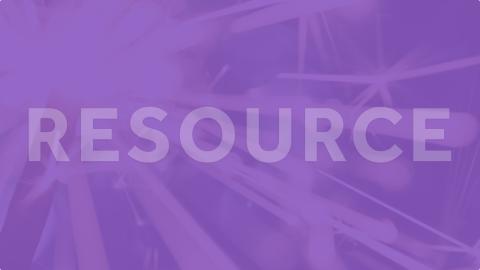
I. Optimum readability of projected text in worship services
A. Background and color contrast
1. It is easiest to read projected text when the contrast is a solid, medium-blue background with plain, yellow letters.
2. A darker background, (black, brown, or darker blue) with white or yellow letters creates a less clear contrast because it enhances glare that gives the effect of staring into a light bulb or a car’s headlights.
3. It is harder to read projected text if the background contains objects, shading, patterns, pictures, areas of bright light, multiple colors, variable dark and light areas or lines, or any movement.
4. Uniformity between screens, that is, using the same colors, layout, background, text size, and style creates a less distracting presentation.
B. Layout, text size, and text style
1. The layout works best if it creates meaningful chunks of words, such as a whole line or lines, which is not necessarily, but could be a whole sentence or paragraph, or outline section, or a whole verse or chorus.
2. It is easiest to read projected text with only 15 to 20 words per screen with the font as large as possible (50 to 80+ points), increased to the largest size that still creates meaningful chunks of words to fill the entire screen (not just a section of the screen).
3. It is easiest to read projected text that uses one type of font with an even thickness, such as Arial or Aphont, that is, a font that does not have both thin and thick lines in the letters (san serif fonts).
4. It is harder to read projected text when the letters are thin, uneven, fancy, or if the font has appearance affects, such as italic, cursive, bold, shadow, all caps, or any affects that may create blur, or if the letters, words, and lines are condensed (expanding letters, words, and lines slightly to 1.05 or 1.10 helps make a text easier to read). View an example below.
5. All these elements; background, contrast, font size, color, and style, need to be considered for overall affect, for example, just enlarging the size of letters might create distracting vertical lines or glare.
Note: The purpose of projectors is to enable people to read the text. If the message is valuable, try to deliver it using the greatest clarity and readability.
II. Creating computer generated printed material
(such as church bulletins, sermon and lesson outlines, or song sheets)
A. Background and color contrast
1. The best contrast is black or dark ink with solid white or yellow paper.
2. It is harder to read text written with dark ink on a dark background, such as on red, blue, purple, green, or grey paper, or to read light ink on dark paper.
3. It is difficult to read text on paper (or on an e-mail) that has objects, pictures, patterns, lines, multicolors, or shading in the text area.
B. Text size, style, and layout
1. The standard definition of large print is18 point font (source: the American Foundation for the Blind). The minimum size for large print is 14 point font (source: US Post Office regulations for free mailing for the blind). Normal sized print is usually considered 12 point font.
2. Readability is best with a plain sans serif font, such as Arial or Aphont, without appearance effects and without condensing the line, letter, or word spacing (expanding these slightly may help).
3. It is harder to read thin or fancy fonts, or fonts with appearance affects, such as italic, cursive, bold, all caps, underline, block, or shadow, or to read text with many different sizes and styles of fonts.
4. The layout works best if it creates meaningful chunks of words, such as a whole line or lines, which is not necessarily, but could be a whole sentence or paragraph, an outline section, or a whole verse or chorus.
5. All of these elements need to be considered together, not just letter size, for example, just enlarging the letters might create distracting vertical lines (those lines can be removed by spacing changes).
C. Cost concerns with large print paper products
1. Reducing the margins or slightly lowering the above standards may be a wise choice, such as when there are just a few words or lines left for a new page. Omitting unnecessary designs may help too.
2. Draft quality printer or copier settings may or may not work well.
3. A format can be too large if it is too hard to create, work with, or view.
4. Just a few, or a few dozen larger 14, 16, or 18 point font bulletins or other handouts using 8½” by 11", or 8½" by 14" (a preferred size), or even larger 11" by 17" paper folded in half may not be too costly.
Note: Larger size print can even help people with "good" vision who do not "need" it and who would not ask for it, but who simply use what is available. Using bifocals or magnifiers can be a strain that larger print helps alleviate. Handouts with 14 point font help everyone in a sanctuary with low lighting. View an example below of print in different font sizes.
III. Bibles, Bible software, ebook readers, and Internet sites
A. Large print Bibles
1. Typically, Bibles are printed with very small, thin fonts. When Bible publishers use a larger, thicker font they may call it "large print,” or "easier to read," but there is no Bible-publishers standard for using the terms "large," "extra large," "giant," or "super giant" print.
2. Bibles labeled "large print" or "extra large print" may be 11, 12, or 13 point font, but 14 point font is the minimum for large print and 18 point font is the standard (18 point font = 1/4 inch).
3. Few Bibles indicate font size or style, you have to call the publishers to get it. Bookstore staff are typically unaware of this issue or the sizes.
4. Dark print on some types of thin paper may be seen on the other side of a page making it harder to read, or the style of the font may be harder to read, or the ink/paper contrast may be harder to read.
5. Truly large print Bibles are heavier to carry, most are more expensive than small print Bibles, some are flimsily made, and most are out of print and unavailable. On-demand computer printing may change this.
B. Large print Bible versions
1. An entire one volume NIV and NKJV, both called "Giant Print" exist, but they do Not indicate font size. They may be 12.5 or 13 point, but are not standard 18 point large print, The font size, style, and paper/ink contrast are unclear.
2. The American Bible Society publishes a complete 18 point font, King James Version (KJV) in one volume (about $35). Both Dake and Holman publish a one volume, complete KJV that are truly large print (18 point font), and Holman publishes an 18 point font New King James Version (NKJV) which they call Super Giant Print.
3. Truly large print Bibles in the NIV or NRSV are four or more volumes per Bible, but publishers might make one volume versions if people request it. (Note: Bibles of any size print are not profitable to make.)
C. Bible software programs, and ebook readers
1. Most, but not all Bible software programs for laptop and desktop computers allow for text enlargement and color and contrast change.
2. Some Bible software programs, which include several Bible versions and resource books, are free online, others cost less than $20, and others cost up to several thousand dollars and include many books.
3. Some of the new ebook reader screens have changeable fonts, but may not seem large because they have little or no color and contrast control, and the lighting may be insufficient. These products will likely be improved in the future. Not all versions are available for ebooks.
4. Alternatives to reading exist, such as Bibles on tape or CD, or a digital book reader, but for people who have enough vision, or if magnifiers help, holding and reading the Bible may be preferred over listening to it or reading it from a computer or an ebook screen.
D. Internet sites
1. It is best when building a Website or e-newsletter, to create a “Text Only” option and to put tags on pictures.
2. Allow the text to wrap so that pressing “ctrl” and “+” together enlarges the text without it extending outside the screen sides.
3. With PDF, allow the text to be copied and pasted to a word processor so it can be enlarged for easier reading without requiring sideways scrolling.
Note: For people who are legally blind and can use computer screen readers or Braille notetakers go to www.optasiaministry.org to request a free library of Bibles and Bible reference works on a DVD (donations are accepted).
Print handouts or projected song lyrics, scripture texts, or outlines are used in order to enhance participation. This calls for the greatest clarity and readability without adding distraction. We are not trying to imitate advertisers’ or Hollywood’s visual affects. Some people may be unaware that there are higher standards for using computers. Further, it is estimated that 80% of people with a disability do not attend church. This may be due to a lack of visual, audio, or physical access in the church. What we create and think of as “normal” may actually be a barrier to others, but this is not about the many versus the few. We are all just a few seconds or a few years away from a time when we may need such help. However, people with an invisible impairment do not usually reveal it, and usually do not ask for access help. They just participate less or do not show up at all. We are each other’s keepers and we are always in the place where what we do for the least of us we do for the One (Matt. 25:40).
Scripture references: (1) Do not curse the deaf or put a stumbling block in front of the blind, but fear your God. I am the LORD (Lev. 19:14). (2) “The King will reply, ‘I tell you the truth, whatever you did for one of the least of these brothers of mine, you did for me’ (Matt 25:40). (3) Each of you should look not only to your own interests, but also to the interests of others (Phil. 2:4).
About the author: John Jay Frank earned a doctorate (Ph.D.) from Syracuse University in Rehabilitation Counseling, a field that focuses on non-medical ways of ameliorating disability. He has been a Certified Rehabilitation Counselor (CRC) since 1993. He worked for several years as a Research Scientist for the federally funded Rehabilitation Research and Training Center On Blindness and Low Vision at Mississippi State University, specializing on the impact of the Americans With Disabilities Act (ADA) on people who are blind or who have a severe vision impairment. He also researched the needs of, and aids for older people who have severe vision impairment. Although the ADA does not cover most religious organizations, Dr. Frank’s professional and personal insight can be helpful for churches as well as for individuals. He has been an ordained minister of the Gospel (Rev.) with Pinecrest Ministerial Fellowship in New York (now called Bethany Ministerial Fellowship) since 1982. He and his wife Edith are members of Westwood CRC in Kalamazoo, Michigan.
Rev. John Jay Frank, Ph.D., Certified Rehabilitation Counselor
814 Dobbin Drive, Kalamazoo, MI 49006
phone: (269) 353-1691, e-mail: [email protected]

Let's Discuss
We love your comments! Thank you for helping us uphold the Community Guidelines to make this an encouraging and respectful community for everyone.